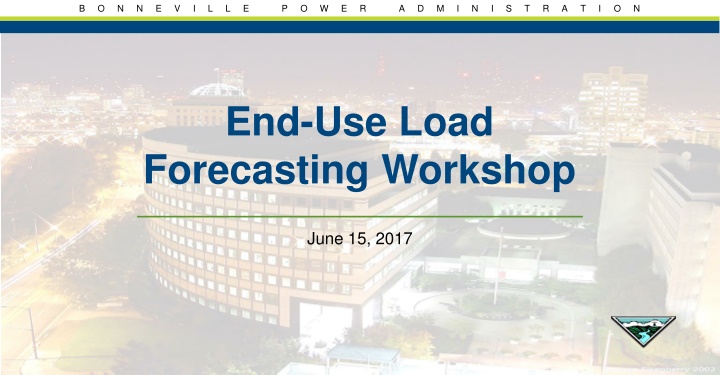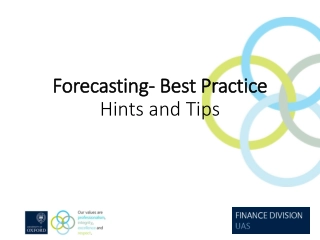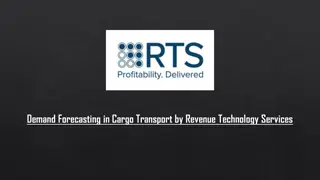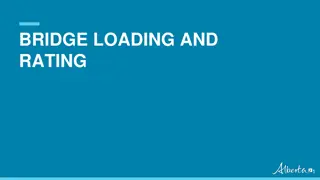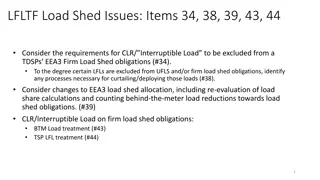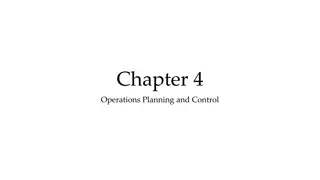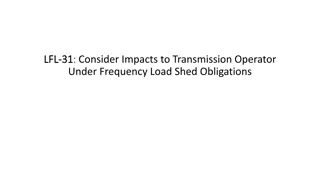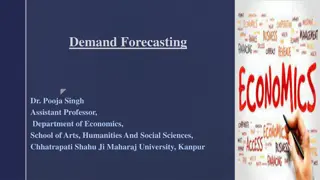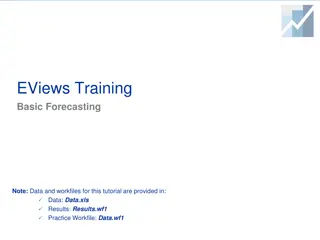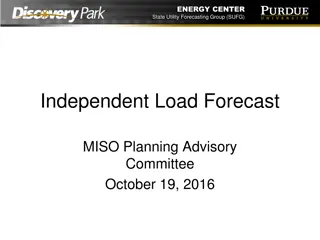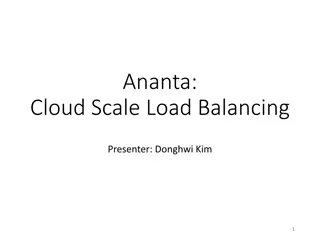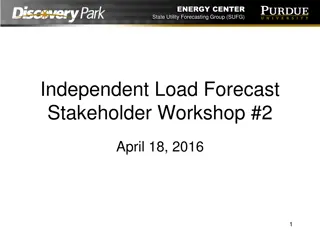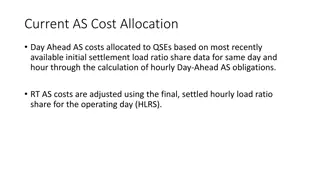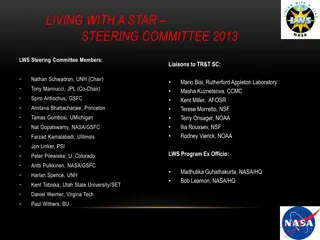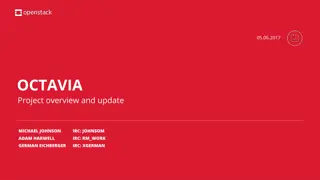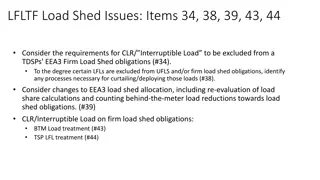End-Use Load Forecasting Workshop
This workshop, taking place on June 15, 2017, focuses on end-use load forecasting in the context of Bonneville Power Administration. Participants will gain insights into forecasting techniques and strategies to enhance decision-making in the power sector.
Download Presentation

Please find below an Image/Link to download the presentation.
The content on the website is provided AS IS for your information and personal use only. It may not be sold, licensed, or shared on other websites without obtaining consent from the author.If you encounter any issues during the download, it is possible that the publisher has removed the file from their server.
You are allowed to download the files provided on this website for personal or commercial use, subject to the condition that they are used lawfully. All files are the property of their respective owners.
The content on the website is provided AS IS for your information and personal use only. It may not be sold, licensed, or shared on other websites without obtaining consent from the author.
E N D
Presentation Transcript
B O N N E V I L L E P O W E R A D M I N I S T R A T I O N End-Use Load Forecasting Workshop June 15, 2017
B O N N E V I L L E P O W E R A D M I N I S T R A T I O N Time Mins Agenda Item 9:00 9:10 10 mins Introductions and Agenda Review 9:10 9:20 10 mins Program Background and Overview 9:20 9:50 30 mins End-Use Forecasting At BPA Overview 9:50 10:00 10 min Wellness Break 10:00-11:00 60 min End-Use Forecasting Framework 11:00 11:10 10 mins Wellness Break 11:10 11:25 15 min End-Use Data Sources being Considered 11:25 11:40 15 mins Scope of Work 11:40 11:50 10 min What s Next 11:50 12:00 10 mins Q&A 2
B O N N E V I L L E P O W E R A D M I N I S T R A T I O N Background BPA began doing its Resource Program after the Act was passed in 1980 The purpose of the RP is to assess BPA s need for power and reserves and then develop a resource strategy for meeting those needs BPA did the RP until 1992 after which it relied on its 1995 business plan In 2008, after BPA signed 20 year contracts, it restarted the RP process Over the past couple of years, BPA has been reviewing its methods for planning and has identified some areas of change which will be discussed today The proposed changes should enhance many of its long-term planning activities through augmented information and analysis 3
B O N N E V I L L E P O W E R A D M I N I S T R A T I O N Project Scope The Resource Program Enhancement Project includes the following efforts: Change to end use based load forecasting Selected the ITRON Statistically Adjusted End-Use (SAE) Approach Conducting a BPA conservation potential assessment and distributed energy resources potential assessment Reviewing the Needs Assessment Determining the economic evaluation methodology and tool for resource optimization 4
B O N N E V I L L E P O W E R A D M I N I S T R A T I O N Resource Program Planning Process Needs Assessment Metrics End Use Load Forecast BPA Resource Forecast Needs Assessment Wholesale Market Price Forecast Conservation Potential Assessment Optimization Process (including Economic Evaluation Methodology) Needs Assessment Metrics* Wholesale Market Reliance Generation Resource Supply Curve DR & DER Supply Curve Resource Solutions * Indicates a new process 5
B O N N E V I L L E P O W E R A D M I N I S T R A T I O N End Use Forecasting Project Status Currently working on scoping with vendor. Software project completion scheduled for February 2018. Currently reviewing and moving ahead with hiring activity and starting internal processes. Expect completion end of calendar year 2018. Reviewing detailed data from available surveys to get market specifics as close to customer level as possible. Started internal training. 6
B O N N E V I L L E P O W E R A D M I N I S T R A T I O N End Use Forecasting at BPA
B O N N E V I L L E P O W E R A D M I N I S T R A T I O N BPA Load Forecast Current State Load Forecasting and Analysis (KSL) is responsible for producing agency load forecasts and associated analysis. Providing over 1000 energy/peak forecasts (annually) Providing a single set of forecasts that are the backbone for consistent transmission and power infrastructure planning and rate cases. Forecasts lack transparency to effectively communicate energy efficiency (EE) impacts included in the forecasts. Models use historical meter reads (already including EE impacts) as an input. 8
B O N N E V I L L E P O W E R A D M I N I S T R A T I O N End Use Load Forecast Future State Goal: An update to the load forecasting process and systems to allow BPA to be transparent and identify the amount of EE and other DSM activities that are in the load forecast This would then allow BPA to determine how much additional EE could be used to meet the BPA needs identified in the Needs Assessment This process update is consistent with an Action Plan item for the 7th Power Plan 9
B O N N E V I L L E P O W E R A D M I N I S T R A T I O N Why Statistically Adjusted End-Use SAE provides the end-use framework for thinking about how electricity is used. It integrates with BPAs existing forecasting suite providing efficiency and maintains flexibility. Leverages current modeling process integrating end-use long-term structural change processes with econometrics. Reduces training time for staff on tool. It allows statistics to help compensate for missing or imperfect data. Retains flexibility to use an econometric or SAE option with the BPA tool suite. 10
B O N N E V I L L E P O W E R A D M I N I S T R A T I O N SAE Primer Modeling Concepts Weather Economy Appliance efficiencies EE &DSM programs Current concepts modeled Appliance Market Shares Demographics Federal Legislation Building Stock Utility use 11
B O N N E V I L L E P O W E R A D M I N I S T R A T I O N SAE modeling additions Provides means to incorporate many end uses explicitly into process (greater transparency) Uses regional data when utility specific data isn t available while calibrating to each utility Uses indices of end-uses as independent model driver Allows us to expand for future technologies and other impacts on electric consumption Easily scalable allowing for full integration into process from transmission POD level to total customer level. 12
B O N N E V I L L E P O W E R A D M I N I S T R A T I O N SAE End-Use Method at BPA Because BPA does not deal with class level data, there are some slight nuances to the standard SAE method being applied. All classes must be included in the modeling process. We cannot model a single class only. We calibrate to total customer energy, no individual class level calibration. Slight differences in process. Slight differences in data views. Fundamental concepts and overall methods gives same results. 13
B O N N E V I L L E P O W E R A D M I N I S T R A T I O N BPA SAE Forecasting Method Residential Cooling Equipment Stock Saturation & Efficiency Thermal Efficiency Square Footage Trends Usage Trends Commercial Cooling Equipment Stock Fuel Share & Intensity Floor Space Trends Usage Trends Residential Heating Equipment Stock Saturation & Efficiency Thermal Efficiency Square Footage Trends Usage Trends Commercial Heating Equipment Stock Fuel Share & Intensity Floor Space Trends Usage Trends Residential Other Equipment Stock Saturation & Efficiency Usage Trends Commercial Other Equipment Stock Fuel Share & Intensity Usage Trends Industrial Economic Trends Energy Intensities Heating Degree Days Cooling Degree Days Res XOther + Com XOther + Ind XOther Res Cool + Com Cool Res XHeat + Com XHeat Energym=a+ bcx XCoolm + bh x XHeatm + bo x XOtherm +em 14
B O N N E V I L L E P O W E R A D M I N I S T R A T I O N End Use Load Forecast Framework
B O N N E V I L L E P O W E R A D M I N I S T R A T I O N SAE End-Use Framework The framework involves five fundamental steps to create independent index types Combine the end-use detail (sets) for the residential, commercial, industrial sectors into three modeling types as independent variables; Heating, Cooling and other. Create monthly representations of indexes. Use utility specific drivers to create expected changes into the future. Scale the data to each specific utility footprint by class of service. Weight monthly indexes by weather Shown as steps for discussion purposes they are not really unique steps 16
B O N N E V I L L E P O W E R A D M I N I S T R A T I O N Creating Independent Variable Sets For the various end-uses create indexes for heating, cooling, and other equipment. Calculate annual intensity (EI) indexes by end use, using formula. UECbaseyear (by) x Sat y/Sat by EFF y/ EFF by UEC is annual kWh use for appliance (ie. Clothes Dryer 800 kWh). Percent of homes with appliance in base year 38%. Efficiency in base year .75 As saturations increase annual intensity increases offset by increases in annual efficiencies. 17
B O N N E V I L L E P O W E R A D M I N I S T R A T I O N Shape indexes to months Apply monthly shaping factors to annual energy to align with actual utility use. EIm = EI x ( MSF1 / ?=1 12MSF) Monthly shaping factors can come from end-use research or utility use detail. Monthly shaping factors can be class specific. Regional or more specific as data allows. 18
B O N N E V I L L E P O W E R A D M I N I S T R A T I O N Economics Determine the future Use economic drivers to determine by class how indexes will change over time. Heat Index (HIRHmy)=( EIRHmy / EIRHmby ) x ? (Xjy / Xjby)Elas j Economic xdrivers can be national, state, county or local variables. Elasticities can be commonly accepted values or utility specific if data allows determination. Economic xdrivers will likely be class specific Households, population, income, residential electric price for Residential Non-Mfg. employment, GSP, commercial electric price for Commercial Sector employment, Mfg. employment, industrial price, commodity prices for Industrial 19
B O N N E V I L L E P O W E R A D M I N I S T R A T I O N Weighting Independent Variables by class Combine the various end-uses types into class weighted indexes. Create the class weighted independent variables types by. HI =(ResHeatWgt x HIRHmy) + (ComHeatWgt x HICHmy ) + (IndHeatWgt x HIIHmy) Each utilities footprint creates a unique index that aligns with their usage. 20
B O N N E V I L L E P O W E R A D M I N I S T R A T I O N Apply Weather Variables to Index Combine the class weighted type indexes with weather variables to align with historical usage. Create the class weighted independent variables types by. Heat Index =(Heat Index x HDD) Cool Index =(Cool Index x CDD) Each utilities footprint creates a unique index that aligns with their usage. 21
B O N N E V I L L E P O W E R A D M I N I S T R A T I O N Index used in Econometric Specification The Index is now used in the forecasting model. Utility Use= (Heat Index,Cool Index,Other Index, Economic Variables, etc.) + Bulk Loads Indices capture conservation and interactions of end-uses with behaviors of utility characteristics. Can include other economic variables as appropriate. Will still include non-trend bulk load additions. 22
B O N N E V I L L E P O W E R A D M I N I S T R A T I O N Benefits of this framework Better transparency of modeling assumptions Detail on EE & DSM assumptions & explicitly how they drive model results Retains ability to independently collaborate on assumptions with each utility Retains scalability ease Sets up framework to easily incorporate distributed generation in the future 23
B O N N E V I L L E P O W E R A D M I N I S T R A T I O N Data Sources Being Considered
B O N N E V I L L E P O W E R A D M I N I S T R A T I O N Saturations What is needed; Historical and future values by end-use (Years 2000-2035) Best choice is utility specific data. Using RBSA phone survey for Residential Where available will use utility data Next option Regional survey data with utility judgement applied Additional option Northwest Power & Conservation Council model results 25
B O N N E V I L L E P O W E R A D M I N I S T R A T I O N End-Use Efficiencies What is needed; Historical and future values by end-use (Years 2000-2035) Best choice is utility specific data. Northwest Power & Conservation Council model results ITRON Data Developed from DOE NEMS Model for the Region Next option Regional survey data with utility judgement applied Additional option Where available will use utility data 26
B O N N E V I L L E P O W E R A D M I N I S T R A T I O N Unit Energy Consumption (UEC) What is needed; Base year consumption by end-use (annual kWh) Best choice is utility specific data. Northwest Power & Conservation Council model results ITRON Data Developed from DOE NEMS Model for the Region Next option Regional survey data with utility judgement applied Additional option Where available will use utility data 27
B O N N E V I L L E P O W E R A D M I N I S T R A T I O N Utility Scalers, HDD, and CDD Data What is needed; Base year Scalers and Normal HDD & CDD Data Best choice is utility specific data. Scalers- Utility Data for 2014, EIA Data or Utility records HDD & CDD Data- Existing BPA Values Next option Scalers- Similar Utility EID data Additional option Scalers- Northwest Power & Conservation Council model results 28
B O N N E V I L L E P O W E R A D M I N I S T R A T I O N Monthly Shaping Factors What is needed; Base Year values Best choice is utility specific data. Northwest Power & Conservation Council model results ITRON Data Developed from DOE NEMS Model for the Region Next option Regional survey data with utility judgement applied Additional option Where available will use utility data 29
B O N N E V I L L E P O W E R A D M I N I S T R A T I O N Economic Drivers What is needed; Historical and future values by end-use (Years 2000-2035) Best choice IHS Markit metropolitan economic data. IHS Markit county level economic data. IHS Markit state sector level economic data. Next option ITRON Data Developed from DOE NEMS Model for the state with utility judgement applied. Where available Utility data. Additional option Northwest Power & Conservation Council state level model data. 30
B O N N E V I L L E P O W E R A D M I N I S T R A T I O N End Use Load Forecast Scope of Work
B O N N E V I L L E P O W E R A D M I N I S T R A T I O N Scope Adjustment Scope of implementing end-use forecasting is being set to meet this criteria We need to have the entire Resource Program completed for IPR in 2018 and delivery date was established as June 2018. This is several months earlier than previously expected. Delivery of the software will be later than expected resulting in a need to do much of this work manually. Hiring will take longer than originally scheduled. Scope- Use SAE end-use forecasting technique to provide forecasts without conservation for customers who account for 60% of cumulative conservation achieved. Ratio this method to the remaining customers by strata to provide forecasts without conservation for others. 32
B O N N E V I L L E P O W E R A D M I N I S T R A T I O N Scope Specifics Between 12-20 customers will be forecast using SAE by the end of September this year. With the completion of the software and hiring we will expand the list in the coming year. Create strata of customers based on historical conservation reported and ratio SAE approach to remaining strata, looking for commonalities between strata. We are open to other thoughts on how to do remaining strata. 33
B O N N E V I L L E P O W E R A D M I N I S T R A T I O N What s next
B O N N E V I L L E P O W E R A D M I N I S T R A T I O N Original Timeline Nov-16 Dec-16 Jan-17 Feb-17 Mar-17 Apr-17 May-17 Jun-17 complete complete Jul-17 Aug-17 Sep-17 Oct-17 Nov-17 Dec-17 Jan-18 Feb-18 Mar-18 Gather IT project requirements Executive approval IT project structure set up Arrange for work with Itron Contracting Process ITRON begins work Staffing process Gather end-use data by class of service Gather customer sales by service class Testing of ITRON work Integrate new IT work with BPA systems Training forecasting staff on end use method Work with customers on end-use forecast Review forecasts Distribute forecasts for use within Agency 35
B O N N E V I L L E P O W E R A D M I N I S T R A T I O N Current Timeline Jan-17 Feb-17 Mar-17 Apr-17 May-17 Jun-17 Jul-17 Aug-17 Sep-17 Oct-17 Nov-17 Dec-17 Jan-18 Feb-18 Mar-18 Gather IT project requirements Executive approval IT project structure set up Arrange for work with Itron Contracting Process Gather end-use data by class of service Gather customer sales by service class Training forecasting staff on end use method Work with customers on end-use forecast Review forecasts Distribute forecasts for use within Agency 36
B O N N E V I L L E P O W E R A D M I N I S T R A T I O N Remaining Steps June: continue data gathering for targeted utilities. June-July: begin discussion with targeted utilities on SAE inputs. Mid-late July: research approaches to apply SAE to other customers. July-August: complete and review SAE results with targeted utilities. Mid-late August: complete and review non-SAE forecasts without conservation. September: Review overall results. Late September: Deliver forecasts without conservation to Needs Assessment for use. 37
B O N N E V I L L E P O W E R A D M I N I S T R A T I O N SAE Targeted Utility Engagement Participate in discussions on SAE inputs (efficiencies, saturations, economic drivers). Compare against utility specific data where available. Research differences. Review forecast results. Understand drivers and impacts. Review for thoroughness. 38
B O N N E V I L L E P O W E R A D M I N I S T R A T I O N Questions
